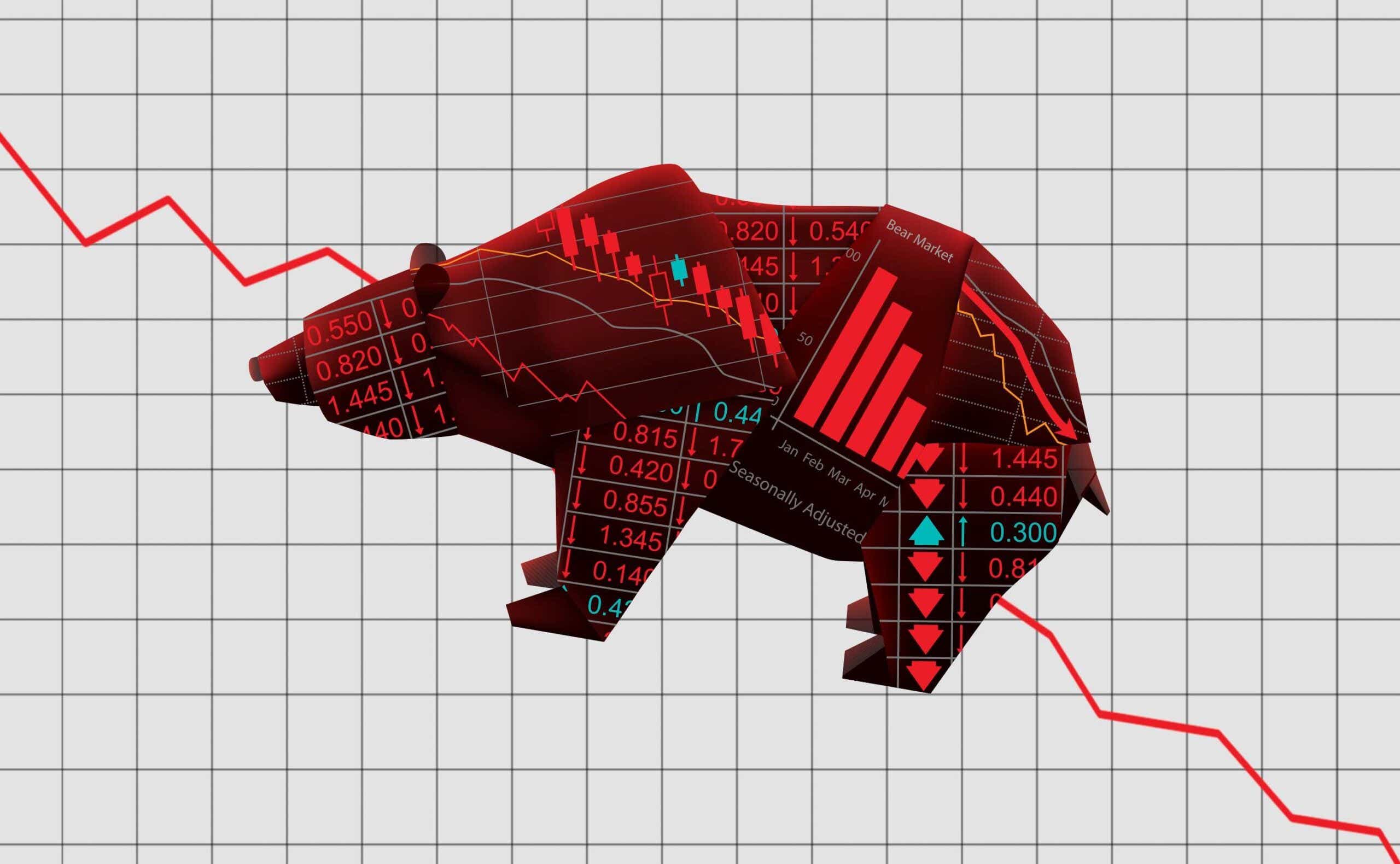We’ve officially entered a “bear market” — here’s what that means.
The S&P 500 was down 3.9% when it closed Monday, bringing it 21% under its most recent high in early January. Inflation — which saw prices rise 8.6% in May — will undoubtedly force the Federal Reserve to get bolder with interest rate hikes. What does this mean? We’re well and truly into a bear market.
The Fed will announce its plan of attack tomorrow after a two-day policy meeting. Per CNN, the majority of experts anticipate a half-point interest rate hike, but some are predicting a three-quarter point rise. In the meantime, here’s a little more info on bear markets — and how you can safeguard your dollars.
Back in March, the stock market officially entered a period known as a “bear market.” That’s the term experts use when stocks drop 20 percent or more during a given period of time — the more serious version of a “market correction,” which is a short-term drop in value of at least 10 percent.
Stocks have been hurting for a while now, and Russia’s invasion of Ukraine has only amplified the trend as it introduces worldwide uncertainty into businesses in many sectors across the globe and leads to effects like spikes in the price of gasoline.
The current market behavior is in opposition to a “bull market,” the term used when stock performance is way up. The U.S. experienced a bull market from 2019 to 2021, which made it one of the longest and best-performing bull markets in history. Investors made record returns during that period, which is partially why this sudden slump might hurt so much.
It goes without saying that people enjoy bull markets a whole lot more than bear markets, but that doesn’t mean it’s necessarily time to panic about your investments. In fact, you can think of this market shift as a great opportunity to check in on your finances, your current phase of life, and how to seamlessly merge those two topics.
Why is it called a “bear market”?
It can be difficult to keep track of all these different stock market terms — especially if you’re not a finance whiz — but there’s a simple way to remember the difference between a bear market and a bull market.
When a bear attacks, it jumps onto its prey in a downward motion, and when a bull attacks, it moves its horns in a scooping, upward motion. If you can remember these directions, then it’s easy to remind yourself that a bull market means the market is trending upward, while a bear market means things are trending downward.
Investors and financial experts frequently use the bear vs. bull shorthand to describe the current status or the future of the stock market based on this metaphor. Get a full explanation of the origins of the “bear” and “bull” terms — which is more interesting than you might think! — right here.
What should I do about my investments?
Given all these market fluctuations and the uncertainty about what’s next, you might be wondering what to do about your investments, from your retirement to your children’s college fund.
If you’re thinking about retirement during this unfortunately tough market, the most basic advice is this, as wealth management expert William Parrott recently explained to MassMutual: “‘Don’t panic’ should be at the top of [your] list, and ‘review your asset allocation’ should be a close second.”
When it comes to investments, allocation is everything, and you can make strategic decisions about how much risk you’re comfortable with and what kind of investments are best for your personal goals. Having a discussion with a financial advisor is a great way to evaluate those goals based on the stage of life you’re in and determine how long you can keep your money in the market before you’ll need to withdraw and put it to use.
Based on that conversation, you can reexamine your current investment ratio and assess how you’re splitting your funds between stocks, bonds, cash, or other investments — all of which carry varying levels of risk — and then adjust accordingly for your comfort level.
But this isn’t something you should do only when the news looks scary. Checking in on your investments periodically and shifting strategy based on your evolving needs is essential in both good times and bad.
How long will this bear market last?
It’s important to remember that the stock market is always moving through different trends, and this bear market will not last forever.
Historically, bear markets have taken place every 5.4 years, according to Forbes. With that said, when it comes to the stock market, there’s no crystal ball. It’s impossible to say when the bear market will end, or what will happen after that. But there’s plenty of reason to believe this phase of the stock market could improve before too long: Historically, bear markets tend to be much shorter than bull markets, with the average length of a bear market being just under 10 months.
But of course, you should always consult with your financial advisor before making any decisions about what to do with your savings. If you’re close to retirement or have already retired, you might be encouraged to take a more conservative stance with your investments, since you don’t have a particularly long time horizon to make up any losses. If you’re younger, you could potentially take advantage of the bear market by continuing to buy stocks when prices are lower, which means you’ll see bigger gains when things rebound.
Either way, the reality is that once the bear market becomes a bit more bullish, it’s only a matter of time before the cyclical nature of the market introduces new dips, which is why planning for these ebbs and flows with smart asset allocation is of the utmost importance.









